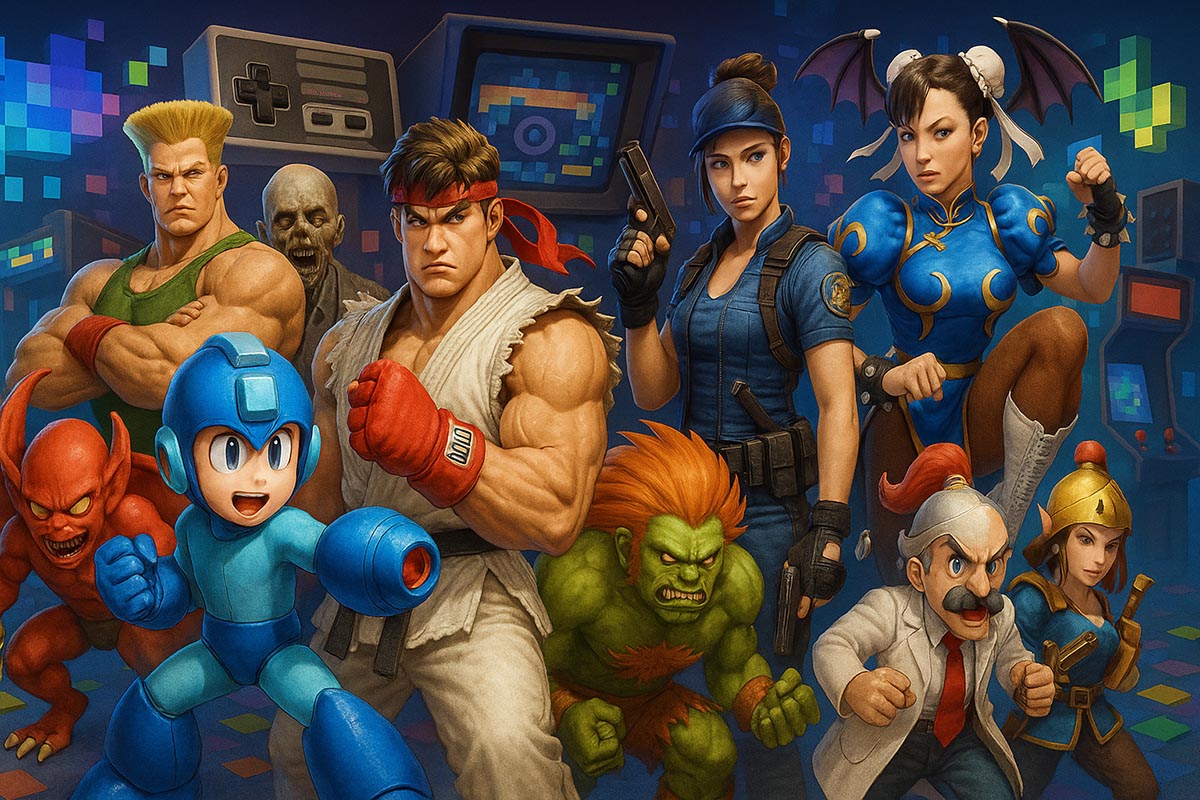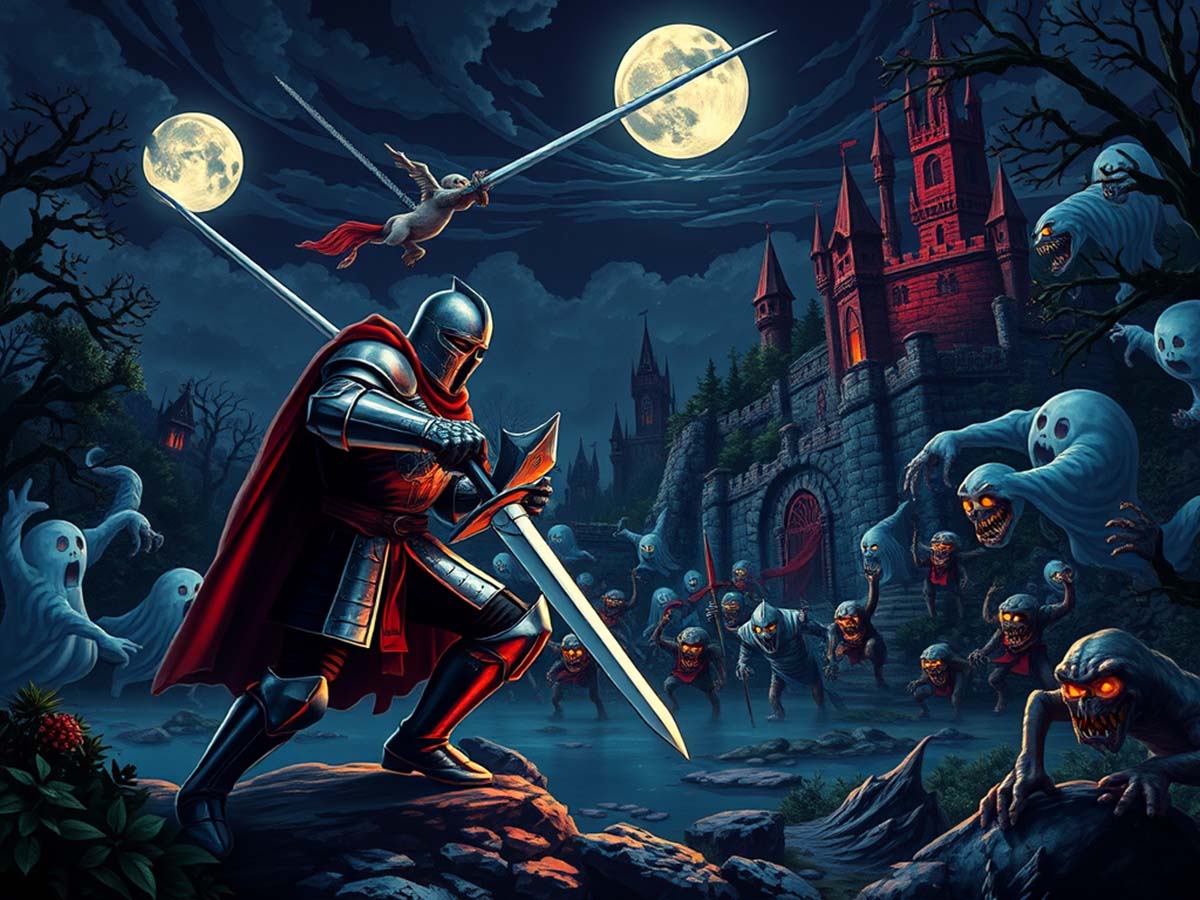The Legacy of Capcom’s Classics: A Global Impact on Gaming
Where It All Started
Capcom’s journey began decades ago, and its name quickly became tied to unforgettable games. Whether you were playing in Tokyo arcades, American living rooms, or European gaming cafés, chances are, you’ve encountered one of their titles. These games brought people together regardless of culture or language.
Each title wasn’t just a source of entertainment. They shaped the way people viewed gaming. Their success came from a combination of smart design, creative ideas, and community response. Developers around the world took notice. Fans kept coming back. And through it all, a pattern emerged: Capcom knew how to make something that would last.
In this article, we’ll look into specific games that defined Capcom’s legacy. From iconic characters to unforgettable gameplay mechanics, their contributions helped create the modern gaming experience we now enjoy.
How Mega Man Changed 2D Action
The original Mega Man, launched in 1987, stood out for its strategic core wrapped in fast gameplay. It introduced a system where players earned abilities from enemies they defeated. This encouraged smart thinking and trial-and-error approaches.
One of the most memorable moments in the game was facing Yellow Devil. This boss was known for being brutally hard. Players couldn’t just attack and hope for the best. They had to observe, analyze, and learn. This led to one of the earliest uses of pattern-based enemy behavior in mainstream gaming.
The ability to adapt was the real lesson. Each level offered a different challenge, and each victory came with knowledge that helped you further. Mega Man wasn’t just about pressing buttons—it asked you to think.
Why Street Fighter II Left a Mark
Street Fighter II made a huge difference when it hit arcades in 1991. It gave people a reason to crowd around machines and cheer on their friends. This wasn’t just a game. It was a shared experience. Battles were fierce. Victories felt earned. Losses made you hungry for a rematch.
The game introduced multiple fighters, each with their own moves and fighting style. Some players preferred Ryu’s balanced approach. Others leaned into Chun-Li’s speed. The point was clear: there were many ways to win.
The introduction of combo attacks changed everything. Players could now string together moves that looked smooth and powerful. It raised the skill ceiling, making matches more intense. Add to that the rise of competitive matches in arcades, and it’s easy to see why the game became a classic.
Resident Evil and the Power of Fear
Resident Evil took a different approach when it launched in 1996. It didn’t just rely on action. It created an atmosphere. The game placed players in an unfamiliar mansion, filled with puzzles, enemies, and very little ammunition. Every step felt risky. Every hallway hid a possible threat.
The camera system also stood out. Rather than follow the player, it was fixed—making each scene feel like a moment from a movie. This setup added tension. You never knew what was waiting around the corner.
Sound played a huge role too. Footsteps echoed. Doors creaked. The silence between encounters was often worse than the fights themselves. This level of immersion set a new standard for game storytelling.
Darkstalkers and Mythical Combat
Darkstalkers came out in 1994, right after the success of Street Fighter II. This time, Capcom took inspiration from folklore and mythology. Players battled using creatures like vampires, werewolves, and ghosts.
But this wasn’t just about character design. The game featured quicker movements, sharper animations, and a deeper focus on style. It attracted fans who wanted something more dramatic in their fighting games.
In countries like the Philippines, it was often referred to by its subtitle, “Vampire Savior.” It found a home in competitive communities and later expanded its reach through spin-off content. TV shows and comic books drew from the game’s rich visual world.
Final Fight and the Urban Battlefield
Before open-world games became popular, players craved action in more grounded settings. Final Fight, released in 1989, offered just that. You walked through tough streets, punched gang members, and saved the city. It wasn’t complicated, but it was satisfying.
Characters like Cody and Haggar became legends. Each level had variety—different enemies, hazards, and boss fights. But what really set it apart were the small touches. Breaking barrels to find items, slamming enemies into walls, using surroundings to your advantage—these details made it feel alive.
The game also laid the groundwork for many future beat ’em ups. Developers borrowed its mechanics and adapted them into their own titles. In many ways, Final Fight defined how urban action games should feel.
Monster Hunter and the Strength of Teamwork
Monster Hunter arrived in 2004 and brought with it a fresh challenge. Instead of being a lone hero, you worked with others. Players teamed up to defeat large creatures in long, strategic battles.
The game didn’t hand out rewards easily. You had to earn them. Missions required preparation—knowing the monster’s weakness, collecting the right tools, and learning to trust your team. It made every victory feel rewarding.
Its crafting system encouraged exploration. Gathering materials, building weapons, and upgrading gear all fed into a larger loop. Over time, other developers followed suit, adding similar systems into their own projects.
Today, cooperative play is everywhere. But Monster Hunter helped prove that it could be more than just a side feature. It could be the main attraction.
Ghosts ’n Goblins: The Test of Patience
Ghosts ’n Goblins wasn’t just hard—it was punishing. Released in 1985, it gave players two hits before death, sent them back after a loss, and sometimes restarted entire levels. And yet, people loved it.
You played as a knight named Arthur. His goal was to rescue a princess, but the journey was anything but simple. Enemies attacked from every angle. Platforms moved at just the wrong time. Victory required perfect timing and nerves of steel.
Its difficulty helped shape how people view challenge in gaming. It taught persistence. It also introduced mechanics like armor loss, enemy waves, and stage repetition—all of which appeared in later platformers.
A Legacy That Keeps Growing
Capcom’s influence isn’t locked in the past. The ideas, designs, and features from these classics show up in modern games all the time. Developers still draw from them, either out of respect or because they simply work so well.
Its contributions led to the rise of organized competitions, online communities, and professional-level gameplay. The shift from local arcades to global events owes much to what Capcom helped build.
From core mechanics to character creation, the studio’s past continues to shape what players expect from a great game. Their success shows that thoughtful design and deep player engagement never go out of style.
What Lies Ahead
The gaming industry keeps evolving, but the foundation laid by these titles remains strong. New games still carry echoes of the classics—whether through familiar mechanics, refined systems, or inspired storytelling.
As long as people value smart design, rich experiences, and games that bring players together, the legacy of Capcom’s classics will remain relevant. They remind us of a time when creativity, effort, and fun blended perfectly.
And more than anything, they show that some ideas never fade—they only evolve.


